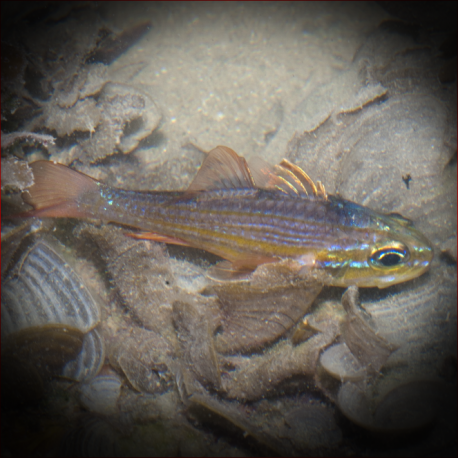More info
Datasheet
| Minimum Tank Size | 150 litres / 39.63 US gallons |
| Maximum Size | 14.0cm / 5.51inches |
| Reef Compatible | Reef safe with caution |
| Temperament | Docile but might be aggressive towards similar species of same gender |
| Temperature | 22.2°C / 71.96°F - 25.6°C / 78.08°F |
| Specific Gravity | 1.020-1.025 |
| Carbonate Hardness | 8-12 |
| pH | 8.1-8.4 |
General Description
The Candystripe cardinalfish, scientifically known as Ostorhinchus endekataenia, belongs to the Apogonidae family, commonly known for their various shapes and colors. With a maximum size of 14.0cm, these fish are recognized for their striped appearance, making them a visually appealing addition to aquariums. They are labeled as hardy fish species, originating from the Western Pacific, primarily found from Tokyo Bay to Taiwan and further south along the western Pacific, with reports of sightings in Samoa.
Aquarium Suitability
Considered suitable for most aquarium setups, the Candystripe cardinalfish can thrive in tanks with a minimum size of 150 liters. They are known to coexist peacefully as a pair if introduced simultaneously. However, caution is advised as they might exhibit aggression towards similar species of the same gender. These fish require good hiding spots, such as spaces between live rocks, to provide them with a sense of security within the tank.
Demands, Care, and Hardiness
The Candystripe cardinalfish is generally well-suited for aquariums, with a large mouth and a hearty appetite. They feed on a diet consisting of fish, larger crustaceans like shrimp and crabs, Artemia, Mysis, and krill. In a captive environment, they are known to consume various food types. Although they can be a threat to smaller fish and crustaceans due to their predatory nature, these instances are not common. Cardinalfish are nocturnal and often seek shelter during the day, preferring hiding spots between stones, SPS corals, and occasionally among the spines of sea urchins.
Reef Suitability
With caution, the Candystripe cardinalfish is considered reef-safe. They can coexist in reef tank setups, but vigilance is recommended, especially concerning potential interactions with other reef inhabitants like shrimps, crabs, and small fish.
Aquarium Setup
When setting up an aquarium for Candystripe cardinalfish, it is essential to provide ample hiding places, such as live rocks and coral structures. Maintaining water conditions within the optimal range of a pH of 8.1-8.4, a temperature between 22.2-25.6°C, a specific gravity of 1.020-1.025, and a carbonate hardness (KH) level of 8-12 dKH, will contribute to the well-being of these fish.
Behaviour
Candystripe cardinalfish are docile by nature, displaying peaceful behavior towards other tank mates. However, they may engage in territorial disputes amongst themselves if space or food resources are insufficient. They have been observed to form small shoals and are known to be active primarily during the nighttime hours.
Feeding and Diet
Their diet consists of various food sources, including small crustaceans like krill, Mysis, Artemia, and zooplankton such as Cyclops and pods. In the aquarium, they have a voracious appetite and will readily consume most food items offered to them, ensuring they receive a balanced and nutritious diet.
Dimorphism and Captive Reproduction
The Candystripe cardinalfish does not exhibit significant dimorphism, making visual distinctions between male and female individuals challenging. They are suitable candidates for breeding tanks, offering enthusiasts an opportunity to observe and potentially participate in the breeding behavior of these fish.
Habitat and Distribution
Found in the East Indian Ocean, Australia, Japan, Indonesia, New Zealand, and the Central/West Pacific regions, the Candystripe cardinalfish inhabits coastal waters near reefs and rocky outcrops, seeking shelter in crevices and among coral formations. Their distribution ranges from Tokyo Bay to Taiwan and extends southward along the western Pacific, with occasional reports of sightings in Samoa.

